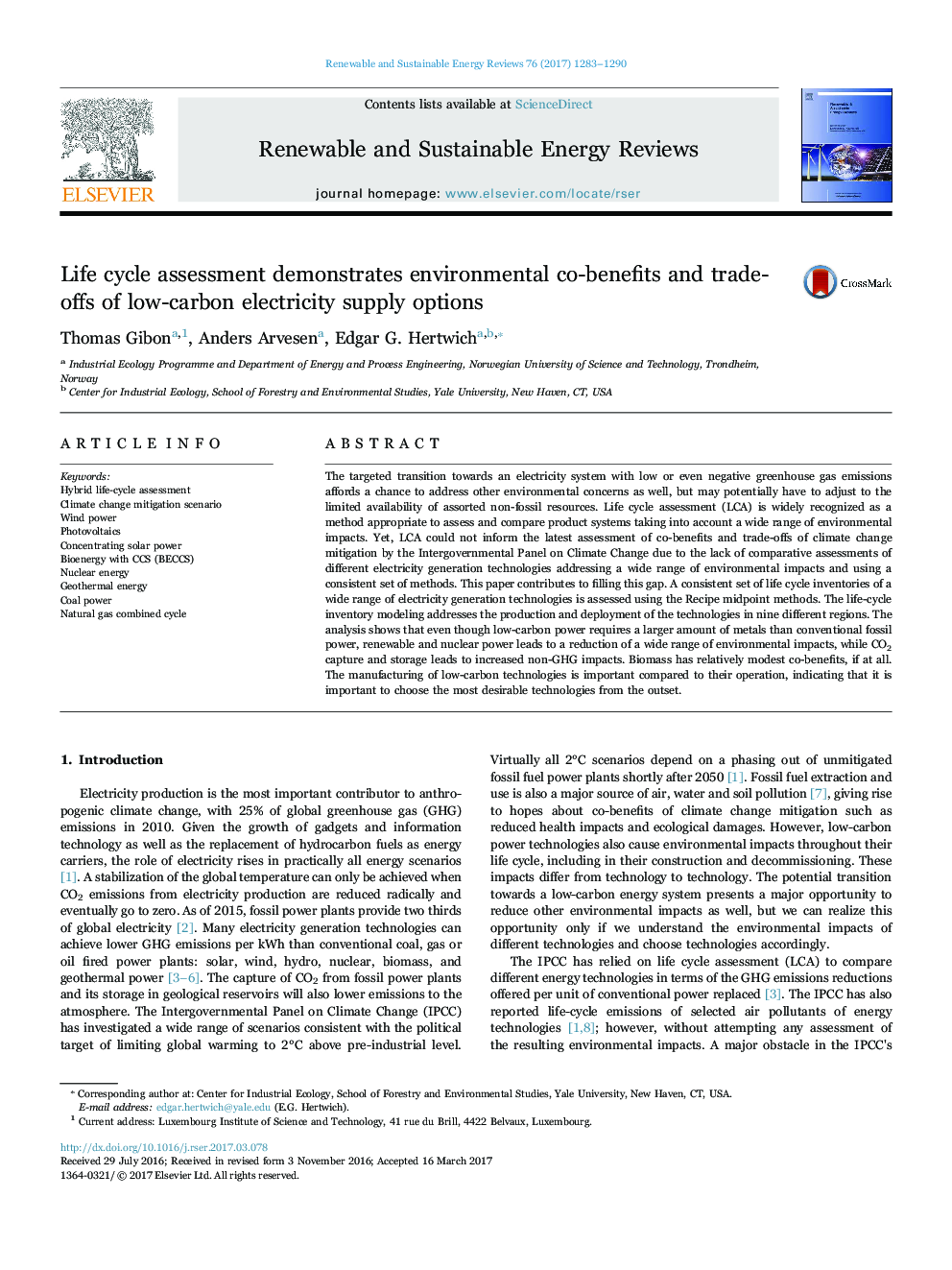| Article ID | Journal | Published Year | Pages | File Type |
|---|---|---|---|---|
| 5482225 | Renewable and Sustainable Energy Reviews | 2017 | 8 Pages |
Abstract
The targeted transition towards an electricity system with low or even negative greenhouse gas emissions affords a chance to address other environmental concerns as well, but may potentially have to adjust to the limited availability of assorted non-fossil resources. Life cycle assessment (LCA) is widely recognized as a method appropriate to assess and compare product systems taking into account a wide range of environmental impacts. Yet, LCA could not inform the latest assessment of co-benefits and trade-offs of climate change mitigation by the Intergovernmental Panel on Climate Change due to the lack of comparative assessments of different electricity generation technologies addressing a wide range of environmental impacts and using a consistent set of methods. This paper contributes to filling this gap. A consistent set of life cycle inventories of a wide range of electricity generation technologies is assessed using the Recipe midpoint methods. The life-cycle inventory modeling addresses the production and deployment of the technologies in nine different regions. The analysis shows that even though low-carbon power requires a larger amount of metals than conventional fossil power, renewable and nuclear power leads to a reduction of a wide range of environmental impacts, while CO2 capture and storage leads to increased non-GHG impacts. Biomass has relatively modest co-benefits, if at all. The manufacturing of low-carbon technologies is important compared to their operation, indicating that it is important to choose the most desirable technologies from the outset.
Keywords
Related Topics
Physical Sciences and Engineering
Energy
Renewable Energy, Sustainability and the Environment
Authors
Thomas Gibon, Anders Arvesen, Edgar G. Hertwich,
